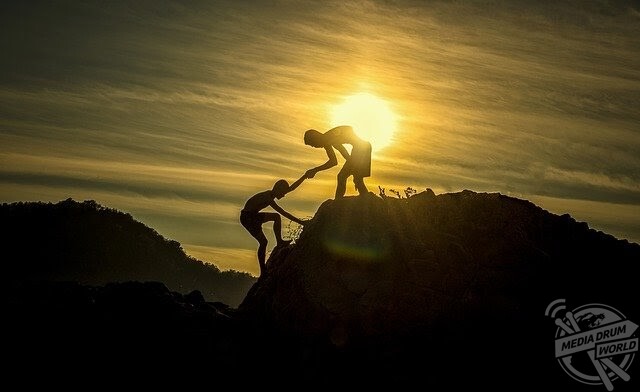Climbing is a difficult sport with a steep learning curve. Not only do you need to develop competent skills, but at the same time, you also need to develop a lot of strength and flexibility. Developing these takes a lot of time and effort. But to excel in the sport, you need equipment that brings out the best in you. Various tools are used during climbing and getting comfortable using these tools is essential for you to have a productive and enjoyable climbing experience. These tools are not just to help you perform better, but also help keep you safe. Faulty and insufficient gear could lead to accidents and when it comes to climbing, this could be the difference between life and death. A lot of these are common to indoor rock climbing, bouldering, and even peak climbing. Here are some useful things that will help you fully enjoy your climbing experience.

Climbing Rope
Climbing ropes essentially serve as your lifelines while climbing and are thus fundamental equipment for climbing. Consequently, they find use in all different types of climbing. They are two types of climbing ropes; static and dynamic. A climber must have both these ropes on him at all times. Static climbing ropes are meant for abscessing, which involves descending a rock face using a descender. These ropes are designed to be very stiff and have a minimum amount of stretch. The other type of climbing rope, i.e. dynamic ropes, are used for belaying and are quite stretchable. The purpose of these ropes is to arrest the fall of a climber. They are stretchable to to help reduce the impact a climber experiences when the fall is arrested.
Harness
Your harness is what the climbing rope attaches to. Now that you know what a climbing rope is, you would know how important it is as well. However, there can be different points of failure in your equipment. A chain is only as strong as its weakest link. If your climbing rope is of excellent quality but your harness has worn out, your safety cannot be guaranteed. But when it comes to a harness, strength is not the only aspect one needs to look at. Another important aspect to consider is comfort. The harness should be comfortable for you to wear and should also allow you adequate freedom of movement. Harnesses are sometimes designed while keeping the weather and the type of climbing in mind. So you should invest in the one that suits your requirements.
Crampons
Crampons are climbing equipment that aid climbers in walking or climbing on slippery surfaces. There are two types of crampons available in the market; flexible and rigid, and they are both designed for different use cases. Flexible crampons are, as the name suggests, flexible and bend with your feet. These are ideal for walking on ice and snow and can strap onto your climbing boots. These are used with leather boots. But if you prefer to use plastic boots, you can opt for rigid crampons as well. Whatever type of boots you prefer to use, Stride Wise got you covered.
Climbing Shoes
To put it simply, you cannot go climbing without a proper pair of climbing shoes. These shoes are made to have a tight fit, using thin and flexible materials and rubber soles, and are designed to give you the best possible grip. When buying a climbing shoe, personal preference takes priority. No one shoe fits all, and shoes are categorized by climbing levels. For beginners, climbing shoes generally have a flat sole while intermediate and advanced level shoes have an arch. This is because advanced shoes are designed for vertical climbing. The design of the shoe is also affected by the nature of climbing. For instance, shoes for bouldering are designed to give you grip in the smallest of footholds and good feedback through the toes. On the other hand, high altitude boots, in addition to giving you a good grip are designed to keep your feet warm.
Climbing Backpacks
When heading out on long expeditions, you need to carry all your supplies with you. This includes spare equipment, tent, toiletries, medical supplies, ration, and so on. Your primary storage option while climbing is a climbing backpack. There are three important factors that have to be considered while choosing your climbing backpack; weight, comfort, and storage capacity. Needless to say, it must be comfortable, given that you would be carrying it over long distances. The weight and storage capacity of the backpack will be linked. So you should always opt for a backpack according to the weight you are capable of hauling. Further, many of them have specifically designed holders for your various mountaineering tools, like ice ax, carabiners, and so on.

Belay
A belay device is a friction brake that is used to protect climbers from falling and also used while descending. Using a belay is quite straightforward and it doesn’t take long to get used to it. Further, it provides multiple points of friction, As a result, the entire weight of the climber does not have to be supported by the belayer. However, as it plays a crucial role in your safety, it is important to practice using it so that you are comfortable in operating it.
Carabiner
A carabiner is a tool that is used to attach things and other tools. These are used for connecting your climbing rope with other equipment such as nuts, harnesses, bolts, and camming devices. Carabiners are generally made of steel and go through a large number of tests to ensure their compliance. They have a lock that opens inwards allowing you to attach equipment and ropes and is secured with a screw-based system.
Climbing as a sport involves a large amount of equipment. The equipment is not only essential to ensure your safety and comfort, but can also help improve your performance. Investing in the right equipment can be the very factor that helps you take your climbing skills and experience to the next level. The equipment described above is essential for any climber and it is important that it is chosen after due consideration.






